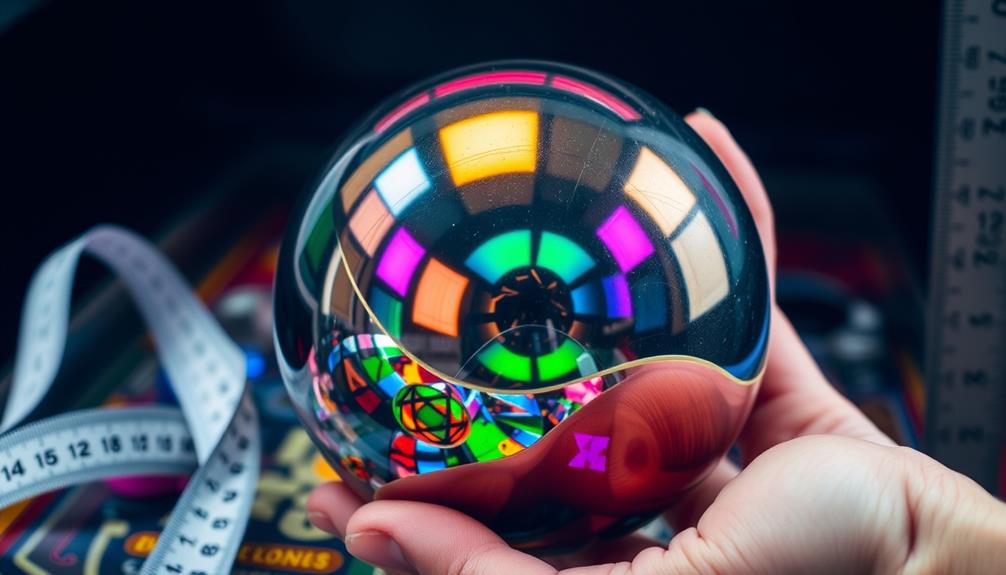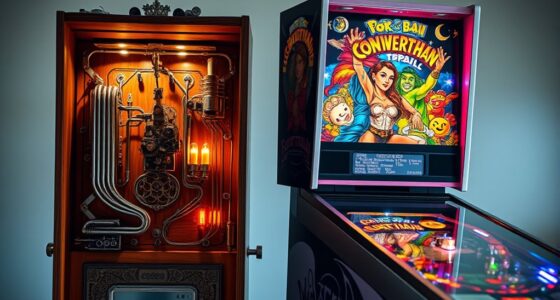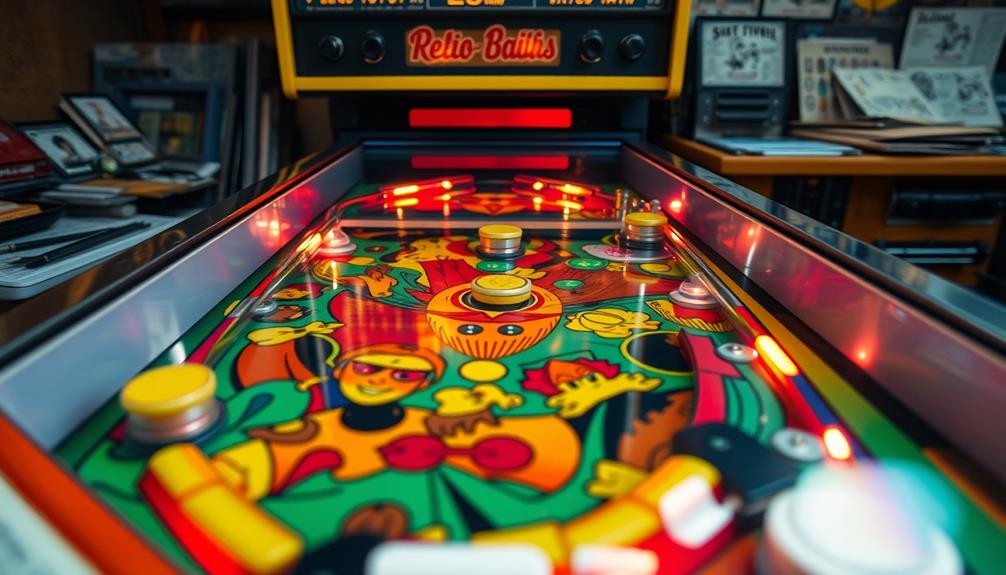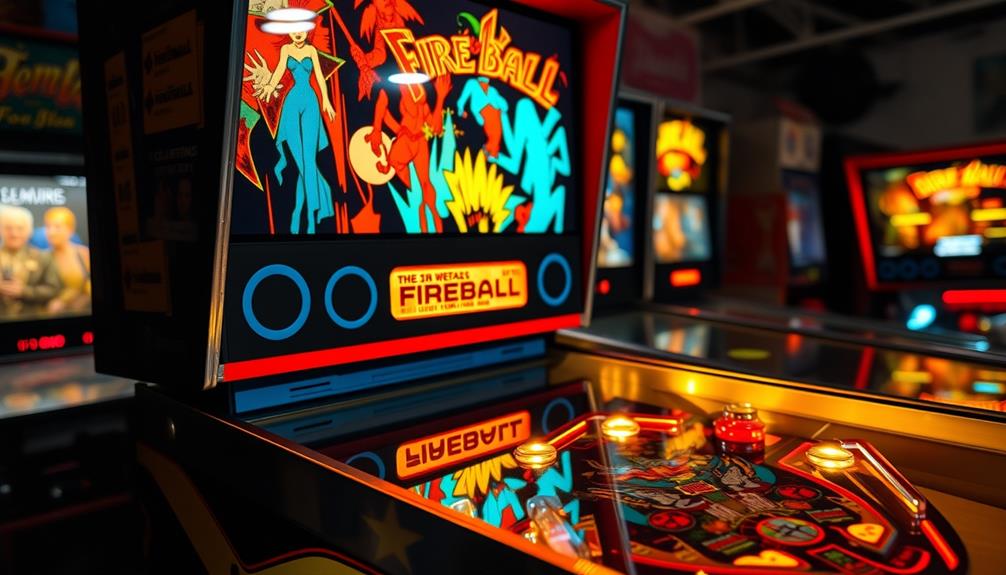A standard pinball ball measures 1-1/16 inches (27 mm) in diameter, a size that has been the norm since the 1950s. This specific size ensures compatibility across most machines, improving gameplay dynamics. The ball typically weighs around 80 grams (2.8 ounces), which contributes to its speed and control. While the 1-1/16 inch ball is commonly used, there are variations such as smaller 1-inch balls for certain games and specialty types like the Powerball. Understanding different sizes can impact your gaming experience. There is much more to discover about these unique balls and their roles in the game.
Key Takeaways
- The standard pinball ball diameter measures 1-1/16 inches (27 mm), established for compatibility in machines since the 1950s.
- Pinball balls typically weigh around 80 grams (2.8 ounces), influencing gameplay dynamics like speed and control.
- Some variations, such as 1-inch balls, are used in specific games like Bally's Truck Stop.
- Specialty pinballs, like Sega's Glo-Balls and the Powerball from The Twilight Zone, incorporate unique materials and weights for different gameplay experiences.
- Pinball balls are primarily made from case-hardened carbon steel, ensuring durability and performance consistency across machines.
Standard Pinball Ball Size
The standard size of a pinball ball measures 1-1/16 inches in diameter, roughly 27 millimeters. This size has been the industry standard for pinballs produced after 1950, ensuring compatibility across most pinball machines. The history of pinball machines dates back to the 18th century, with the modern version of the game being patented in 1871. As technology advanced, so did the design and mechanics of pinball machines, leading to the establishment of the standard size for pinball balls. This standardization has allowed for a seamless playing experience for pinball enthusiasts across different machines, regardless of their make or model.
When you play, you'll notice how this size contributes to the game's overall dynamics and enhances user experience, which is essential for retaining player engagement. Weighing around 80 grams (or 2.8 ounces), a standard pinball ball strikes a balance between speed, control, and visibility, making gameplay more engaging.
You might find that the ball's weight enhances your ability to aim and react, giving you better control during those intense moments.
While you may come across variations, like 1-inch and 1-1/8 inch balls, these are less common and often tailored to specific games.
Sticking with the standard pinball size allows for a consistent gaming experience, no matter which machine you choose, aligning with the principles of content relevance and authority.
Variations in Pinball Sizes
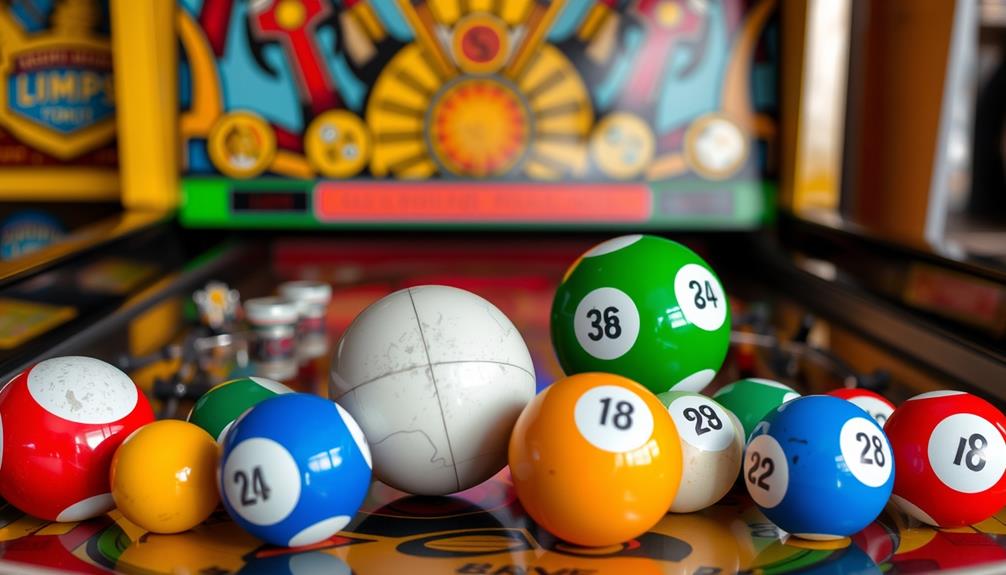
While most pinball machines use the standard 1-1/16 inch ball, several variations exist that cater to specific gameplay needs and design features. For instance, some machines, like Bally's Truck Stop, utilize a smaller 1-inch diameter pinball. This allows for unique game mechanics and different play dynamics that enhance the overall experience, similar to how easy homemade flautas can elevate family dinners with their crisp texture and savory fillings.
Additionally, Sega's Viper Night Driving introduced Glo-Balls with a distinctive yellow rubber coating, weighing only 60 grams, which sets them apart from traditional steel pinballs. These lighter alternatives can change how players interact with the game, adding a fresh twist to gameplay.
Another remarkable variation is the Powerball featured in The Twilight Zone pinball machine. This lighter ceramic ball weighs 65 grams and is designed to create exciting new dynamics during play.
For collectors and enthusiasts, custom and specialty pinballs are available in various designs, including gold, silver, or black finishes. These variations not only appeal to aesthetics but also enhance the overall enjoyment of pinball machines.
Material and Manufacturing Details
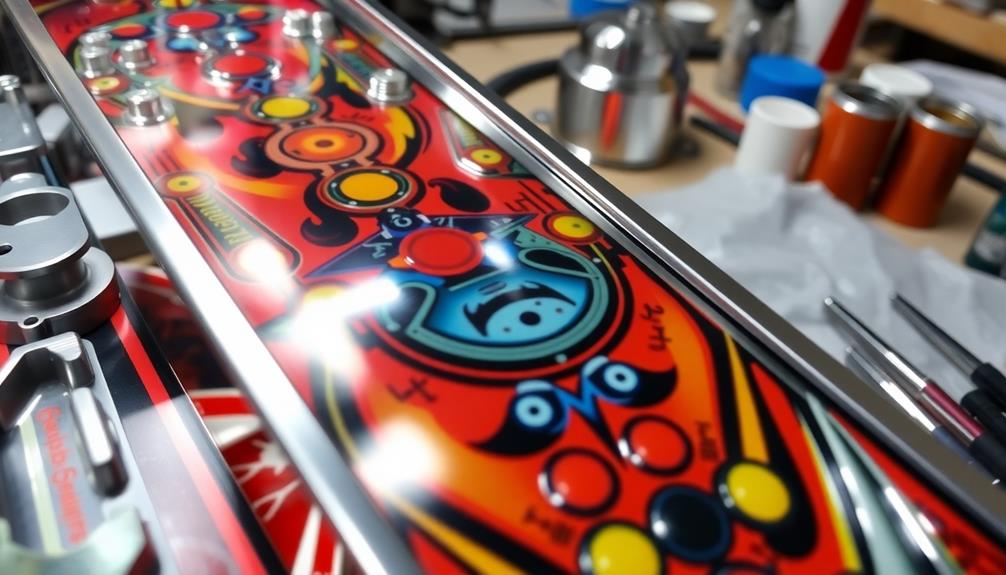
Pinball balls are crafted from case-hardened carbon steel, making certain they withstand the rigors of intense gameplay. This material is specifically chosen for its durability, giving you a consistent and reliable experience as you play.
Rhythm Failure's uplifting music captures the same essence of joy found in a great game. With a standard diameter of 1-1/16 inches (27 mm), these steel balls have been the industry norm since the 1950s, maintaining a balance between size and performance.
The manufacturing process for pinballs is meticulous, assuring that each ball exceeds factory specifications for hardness, roundness, and weight. On average, a pinball weighs about 80.6 grams (3 ounces), which contributes to its performance on the playfield.
While most pinballs are made from carbon steel, some variations, like the lighter Powerball, use materials such as ceramic to create unique gameplay effects.
It's important to remember that while carbon steel offers durability, regular inspections are essential to make sure your pinballs remain in top condition. Rusty or scratched balls can harm the playfield surfaces and negatively impact your gameplay.
Maintenance for Optimal Performance
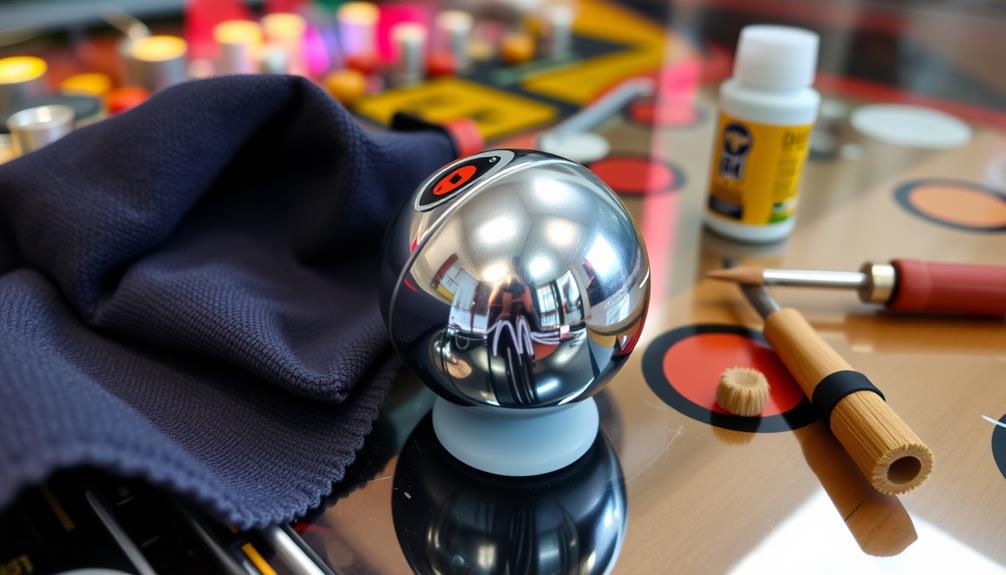
Maintaining your pinballs is key to ensuring they perform at their best during gameplay. Regular cleaning not only keeps them shiny but also reduces scratches that can harm your playfield.
An old ball with too many deep scratches can ruin your gaming experience, so it's vital to replace them as needed. Additionally, understanding the importance of proper disposal practices can prevent issues that might arise from improper care, such as clogs in your pinball machine components toilet maintenance and repairs.
Here are some essential maintenance tips to keep your pinballs in top shape:
- Clean pinballs regularly to maintain their smooth surface.
- Inspect for scratches often, and consider replacements when necessary.
- Use tumbler cleaning to restore the reflective finish.
- Be mindful of playfield components; metal can wear down balls faster.
- Schedule routine maintenance to enhance longevity.
Historical Context of Pinball Balls

The evolution of pinball balls reflects the industry's innovative spirit and adaptability over the decades. Established post-1950, the standard size for pinball balls is 1-1/16 inches in diameter, which has remained the norm for most machines for over 60 years.
However, variations have emerged, showcasing the creativity of game designers. For instance, Bally's Truck Stop from 1988 used a smaller 1-inch diameter pinball to avoid redesigning ramps, illustrating a practical approach to design constraints. Understanding the importance of diversification in investment strategies can also apply to the diverse designs seen in pinball machines.
One notable innovation came with the Twilight Zone pinball machine, which introduced the Powerball, a lighter ceramic ball weighing just 65 grams. This unique addition highlighted the potential for different materials in gameplay.
Other experiments, like Sega's Glo-Balls featuring rubber coatings, aimed for unique effects but fell short due to durability issues.
Atari's Hercules pinball machine took experimentation to another level by using a real pool ball, demonstrating the industry's willingness to push boundaries.
These historical developments emphasize how the design and size of pinball balls have evolved, reflecting both innovation and the challenges of maintaining gameplay quality.
Frequently Asked Questions
What Is the Size of a Standard Pinball?
When you're looking for a standard pinball size, you'll find it's typically 1-1/16 inches in diameter. This size has been the industry standard for over 60 years, ensuring compatibility across most pinball machines.
What Is the Average Weight of a Pinball Ball?
The average weight of a pinball ball is about 80.6 grams, or 2.8 ounces. This standard weight enhances gameplay by providing a stable trajectory, ensuring you enjoy a consistent and engaging experience while playing.
Why Was Pinball Illegal?
Imagine a game of chance, where luck dances with fate. Pinball was deemed illegal because authorities saw it as gambling's mischievous cousin, threatening public morality and order, leading to bans and confiscations across the country.
What Are Pinball Balls Made Of?
Pinball balls are primarily made of case-hardened carbon steel, ensuring durability and a smooth surface. You'll find that these materials enhance gameplay, while regular maintenance keeps your pinball in top shape for peak performance.
Conclusion
In summary, the standard pinball ball size is about 1.125 inches in diameter, fitting perfectly in the vibrant world of pinball machines. Just like a small planet orbiting a sun, these balls play an essential role in the game's dynamics. Understanding the variations and materials helps you appreciate the craftsmanship behind them. By keeping your pinball balls well-maintained, you're ensuring a smoother, more enjoyable experience, allowing you to fully immerse yourself in the thrill of the game. When it comes to the average pinball size, it’s important to note that while most pinballs are around 1.125 inches in diameter, there can be slight variations depending on the specific machine or manufacturer. Some may be slightly smaller or larger, but generally, the standard size remains consistent. Regardless of the exact size, the weight and material of the pinball are also crucial factors in its performance within the game.
